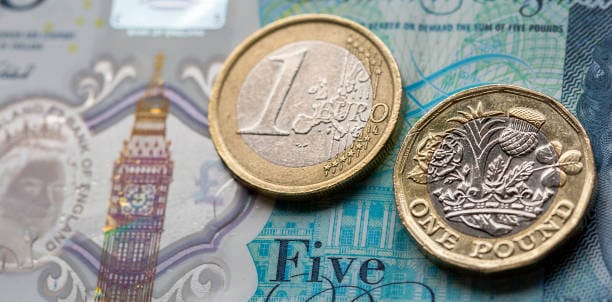GBP/EUR exchange rate week review: pound hits two-week high against euro
The euro was dented by static Eurozone inflation that stoked speculation the European Central Bank will start loosening policy in June, causing the pound euro rate to spike.

(13/05/2024 to 17/05/2024)
Monday
The pound euro (GBP/EUR) exchange rate was trapped in the 1.16 mid-range as a dearth of market-influencing data from the UK and the Eurozone left it treading water.
The pound remained moderately supported by suggestions that the UK economy is ‘turning a corner’, as UK business output increased to a two-year high last month – a resurgence that is being driven by rising consumer spending power and a subsequent service-led rebound.
The euro (EUR) traded sideways amid the lack of notable data and a nebulous market mood.
Tuesday
News of a cooling UK jobs market created headwinds for the pound, causing it to slip lower against the single currency.
The UK’s latest employment report showed the jobless rate ticked up slightly in the first quarter to its highest level since last summer.
But pay rises, excluding bonuses, remained static, having been expected to slow between January and March – causing investors to trim their interest rate cut bets.
The euro received moderate support from a better-than-expected German ZEW economic sentiment index for May, but its gains were stifled by inflation figures from the Eurozone’s powerhouse economy – helping the pound to recover from the basement of the 1.16 range. German consumer prices inched up in April to 2.4%.
Wednesday
The pound’s recovery saw it advance into the 1.16 mid-range despite better-than-forecast data from the bloc.
The single currency was undermined by risk-on flows that overshadowed upbeat industrial production figures.
Total production in the Eurozone rose in March, marking a second straight month of growth and beating forecasts.
The risk-friendly mood also diluted data showing economic growth in the Eurozone between January and March, as the area’s economy exited a recession at the end of last year.
Risk appetite supported the pound, but its gains were capped by dovish commentary from the Bank of England’s (BoE) Chief Economist Huw Pill the previous afternoon, which stoked speculation that the central bank will cut rates in June.
Pill said: “I think it’s not unreasonable to believe that through the summer we will begin to see enough confidence in the decline in persistence that Bank Rate will come into consideration. There has been an easing of the labour market but it still remains pretty tight by historical standards.”
Contact a currency specialist to discover how they can help you take control of exchange rates.
Thursday
The pound euro rate traded close to an eight-day high in the 1.16 mid-range, sidestepping hawkish rhetoric from BoE policymaker Megan Greene, who said: “In considering for how long we must retain our restrictive stance before policy should be eased, I think the burden of proof therefore needs to lie in inflation persistence continuing to wane.”
With economic data thin on the ground, the euro continued to trade without a clear direction. An unclear market mood combined with the single currency’s status as a safe-haven currency also prevented it from attracting investor attention.
Friday
The pound charted an upward course, hitting a two-week high against the euro just shy of 1.169 after the single currency was dented by rising interest rate cut expectations in the bloc.
Eurozone annual inflation came in at 2.4% in April, remaining unchanged from March and reinforcing expectations of a rate cut from the European Central Bank (ECB) this summer.
This compounded remarks from ECB Vice President Luis de Guindos who discussed the central bank’s growing confidence that inflation would cool to the central bank’s 2% target in 2025 – a dovish outlook that ramped up investor rate cut bets.
He said: “Headline inflation is there at 2.4%, core inflation below 3%. We believe that in the coming months, inflation will fluctuate around these values. In the medium term, in the year 2025, we will be moving in a stable way towards our price stability objective which is 2%.”
The GBP/EUR pair ended the week at 1.167.
Looking ahead
The main catalyst for the pound could be a speech from BoE Deputy Governor Ben Broadbent on Monday, with investors listening for hints about policy loosening.
This is followed on Tuesday by a speech from BoE Governor Andrew Bailey, whose neutral viewpoint on interest rates has caused the pound to soften recently.
A speech from ECB President – and dove – Christine Lagarde on Tuesday could drive downward euro movement, as the central bank is widely expected by markets to begin cutting interest rates in June.
